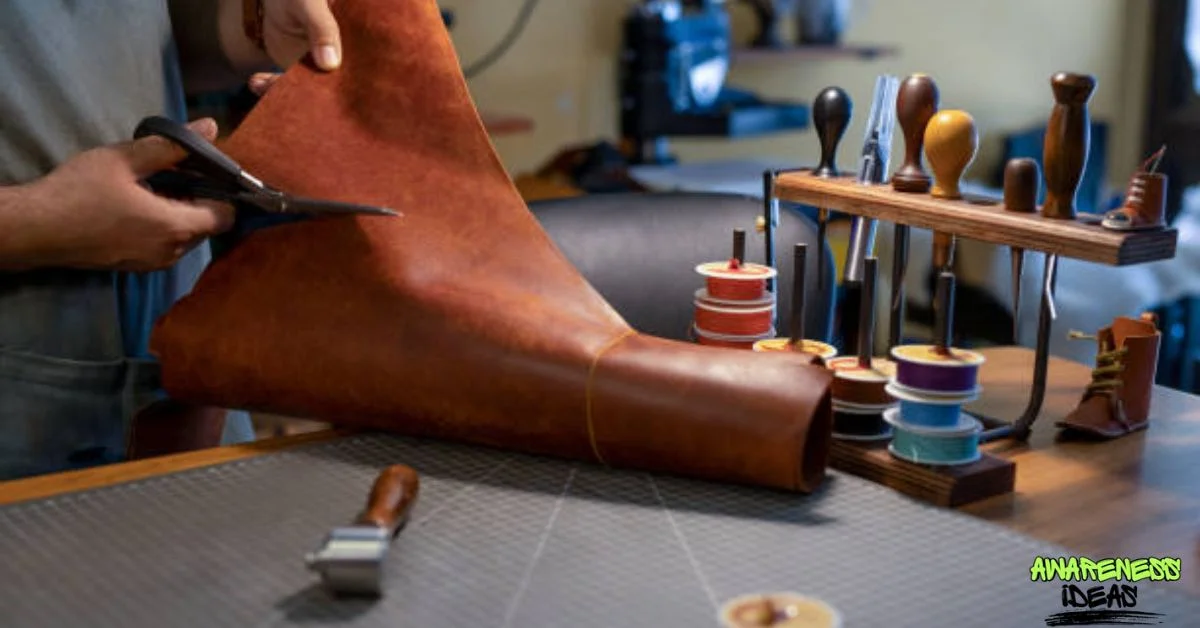When snow blankets the mountains and ski enthusiasts head for the backcountry, one piece of gear quietly plays a heroic role — the Zuschneidfelle. These aren’t your ordinary accessories; they’re your ticket to uphill freedom, the difference between slipping and gliding smoothly toward alpine peaks.
But what exactly are Zuschneidfelle, and why have they become an indispensable part of every ski tourer’s kit?
Let’s dive deep into their history, technology, and practical craftsmanship that turns a roll of mohair and nylon into a mountain conqueror’s secret weapon.
1. What Are Zuschneidfelle?
The term “Zuschneidfelle” translates literally from German as “cut-to-fit skins.”
They’re adhesive-backed climbing skins that attach to the bottom of your skis to allow forward glide while preventing backward slip — a concept inspired by the texture of animal fur used in early skiing history.
Unlike pre-cut skins made for specific ski models, Zuschneidfelle come in standard widths and lengths. Skiers must trim and shape them manually to fit the contours of their skis — tip to tail, edge to edge. The customization ensures maximum surface coverage and optimal traction when climbing uphill.
2. The Historical Roots: From Animal Fur to High-Tech Fiber
Long before carbon poles and ultralight bindings existed, skiers in Scandinavia and the Alps used real sealskin as their climbing material. The fur’s natural grain allowed easy forward movement but resisted sliding backward — a perfect natural “grip and glide” solution.
By the mid-20th century, environmental and ethical concerns, combined with advances in textile technology, led to synthetic alternatives.
Today’s Zuschneidfelle use blends of mohair (from the Angora goat) and synthetic fibers like nylon or polyester to balance grip, glide, and durability. The shift from animal skins to hybrids marks a remarkable evolution in ski technology — a nod to tradition wrapped in innovation.
3. The Anatomy of a Zuschneidfell
Each skin may look simple — a fabric strip with a sticky back — but there’s clever engineering behind every layer:
a. The Glide Layer (Pile)
This upper surface provides traction.
- Mohair fibers give exceptional glide on dry, cold snow.
- Nylon fibers add durability and better grip in wet or icy conditions.
- Hybrid blends (65% mohair, 35% synthetic) offer the best of both worlds — smooth glide with resilience.
b. The Base Layer (Backing)
This layer connects the fabric to the adhesive. It must resist moisture while maintaining flexibility. A high-quality base ensures that the skin adheres securely without bubbling or peeling under temperature changes.
c. The Adhesive Layer
Traditional skins used hot-melt glue, which required regular maintenance and re-gluing.
Modern hybrid adhesives (like those used in Contour or Pomoca models) use a dual-layer bonding system — part adhesive, part mechanical grip. They offer strong hold yet are easy to remove, even in cold conditions.
d. The Attachment System
Zuschneidfelle typically feature:
- Front tip hooks or rubber loops that secure to the ski tip,
- Tail clips or straps that anchor the rear,
- And elastic tension systems to keep everything snug.
4. Why Cut-to-Fit Matters
Ski touring is all about efficiency — every gram, every glide counts.
Pre-cut skins might save a few minutes, but Zuschneidfelle are tailored perfection. Here’s why they’re worth the effort:
- Custom Widths and Lengths: No unnecessary overlap or exposed ski base.
- Edge Exposure Control: You can decide how much metal edge to leave uncovered, optimizing grip vs glide.
- Universal Compatibility: Works with any ski brand or model.
- Economical: One pair of Zuschneidfelle can often fit multiple skis after re-trimming.
Cutting your own skin is like tailoring a suit — when it fits perfectly, it feels effortless.
5. Step-by-Step: How to Trim Zuschneidfelle
Getting the perfect fit requires patience, a sharp cutter, and a steady hand. Here’s a simplified trimming guide inspired by expert recommendations (like those from Kohla and Contour):
Step 1: Prepare Your Workspace
Lay your ski on a stable surface, base facing up. Ensure it’s clean and dry. Gather your tools: trimming knife, ruler, skin, and attachment hardware.
Step 2: Attach the Tip
Fix the skin’s front loop or clip to the ski tip.
Align it so that the skin sits centered on the ski — equal edge margins on both sides.
Step 3: Tension and Lay
Pull the skin toward the tail, creating light tension to remove wrinkles. Press it gently along the ski’s length.
Step 4: Cut Along the Edge
Using the trimming knife, cut along one ski edge from tip to tail. Keep the blade angled slightly outward to leave 1–2 mm of ski edge visible — this prevents snow build-up and improves control.
Repeat on the other side.
Step 5: Finish and Protect
Brush away loose fibers, check symmetry, and trim excess length. Some skiers apply edge sealant spray to prevent fraying or moisture intrusion.
Voilà — your Zuschneidfell is ready to climb.
6. Material Science Behind Zuschneidfelle
It’s not just about cutting fabric; it’s about balancing friction, fiber alignment, and hydrophobicity.
Mohair Skins
- Exceptional glide
- Lightweight and fast-drying
- Best for dry, cold conditions
- Slightly less durable on rough snow
Nylon Skins
- Strong grip and toughness
- Ideal for wet, icy, or abrasive surfaces
- Heavier and slower glide
Hybrid (Mohair–Synthetic)
- Compromise between glide and durability
- The go-to choice for mixed conditions
- Often seen in children’s and all-rounder models (like Contour Hybrid Kids)
The direction of the fibers also matters — brushed backward, they allow forward motion but resist backward slide, mimicking animal fur.
7. Maintenance and Care
Just like skis, Zuschneidfelle demand care to keep them performing season after season.
Cleaning
After each tour, remove snow and dirt with a soft brush. Let them dry naturally — never on a radiator or direct sunlight, as this can damage the glue.
Storage
Stick them glue-to-glue using protective foil or mesh. Store in a cool, dry place.
Re-gluing or Refreshing Hybrid Adhesives
If adhesion weakens, clean with a mild solvent and refresh with manufacturer-specific glue or hybrid cleaner. Contour and Pomoca sell specialized kits.
Edge Fray Repair
Use a lighter edge sealer or sewing repair tape if fibers start separating. Preventive care goes a long way.
8. Common Problems and Solutions
| Problem | Cause | Solution |
|---|---|---|
| Skin won’t stick | Dirt or moisture on ski or adhesive | Wipe both surfaces clean and warm the glue slightly |
| Ice under skin | Snow infiltrated edges | Ensure full contact; consider tail clips |
| Skin sliding backward | Improper tension or trimming | Adjust strap and ensure correct edge exposure |
| Glue transfer to ski base | Overheated adhesive | Store at moderate temperatures |
| Frayed edges | Rough cutting or no edge sealing | Re-trim carefully and seal edges |
9. Environmental and Ethical Considerations
Modern Zuschneidfelle reflect the ski industry’s sustainability shift.
Manufacturers are moving toward:
- PFC-free water repellents
- Recycled backing materials
- Eco-friendly adhesives that don’t require solvent-based glues
Brands like Kohla Austria, Contour, and Pomoca have taken big steps in producing greener, longer-lasting skins. Many models now feature biodegradable packaging and vegan fiber alternatives, showing that performance and eco-ethics can share the same slope.
10. Kids and Beginners: Making Zuschneidfelle Accessible
The popularity of junior and youth ski touring kits — such as the Contour Hybrid Kids — highlights a new trend: making backcountry skiing family-friendly.
For younger skiers, Zuschneidfelle are designed shorter (up to 140 cm) and narrower (around 95 mm).
Their hybrid glue allows easy handling, so kids can remove or reapply skins without adult help. This independence encourages confidence — a crucial part of early mountain education.
11. Choosing the Right Zuschneidfelle for Your Skis
When selecting your skins, keep three criteria in mind:
a. Width
Choose a skin slightly wider than your ski’s widest point (tip). You can trim excess from the edges.
b. Length
Pick one that covers most of your ski’s base but leaves a few centimeters at the tail, depending on the attachment type.
c. Terrain & Snow Type
- For cold, powdery conditions → go for mohair-heavy skins.
- For mixed or wet snow → pick nylon or hybrid.
- For steep climbs → ensure a strong grip-focused skin.
Don’t underestimate the impact of climate and snow texture — what works in the Alps might not suit the Rockies.
12. Advanced Tips for Perfect Fit and Longevity
- Warm Before Applying: Adhesive performs best at moderate temperatures (~15 °C).
- Use a Cutting Guide: Some skins include a built-in trimming guide to protect the ski base.
- Mark Before Cutting: Use a washable marker to outline where you’ll trim.
- Avoid Sharp Metal Edges: A small exposed metal strip (1 mm) helps prevent edge rust and snow lift.
- Check After First Tour: Re-evaluate fit and tension — skins often “settle” after initial use.
13. The Experience: Why Skiers Love Zuschneidfelle
There’s something uniquely satisfying about crafting your own piece of gear. When you cut and shape Zuschneidfelle by hand, you connect more intimately with your skis — understanding every curve, every contour.
It’s like tuning an instrument; once it’s in harmony, your uphill rhythm becomes smoother, quieter, more natural. Each glide forward feels earned, a blend of human skill and mountain spirit.
For many alpine purists, cutting their skins isn’t just preparation — it’s a ritual. A moment of calm focus before adventure.
14. The Future of Zuschneidfelle
Innovation continues to climb the mountain. The next generation of Zuschneidfelle promises:
- Self-healing adhesives that restore stickiness when warmed,
- Nano-fiber coatings to repel moisture and dirt,
- Sustainable manufacturing using plant-based fibers,
- Smart tension systems with integrated sensors for grip feedback.
The classic fur may be gone, but the soul of the Zuschneidfell — human adaptability — lives on stronger than ever.
Conclusion
Zuschneidfelle are more than functional ski accessories — they’re a symbol of craftsmanship, customization, and respect for mountain terrain. Whether you’re a seasoned alpinist or a first-time tourer, cutting your own skin connects you directly to the mountain environment.
Every glide upward becomes a collaboration between your gear and your hands. In an era of automation, Zuschneidfelle remind us that precision born from patience still reigns supreme on the slopes.
FAQs
1. What is the difference between Zuschneidfelle and pre-cut skins?
Zuschneidfelle require manual trimming to fit your skis perfectly, while pre-cut skins come ready-shaped for specific models.
2. How wide should Zuschneidfelle be before trimming?
Choose a width slightly larger than your ski’s widest point, usually 2–4 mm more, to ensure full coverage.
3. Can I reuse Zuschneidfelle on new skis?
Yes, if the new skis are similar in size; you can re-trim the skins. However, glue strength and length might limit reuse.
4. How long do they last?
With proper care, good-quality Zuschneidfelle last 3–5 seasons, depending on snow conditions and frequency of use.
5. What’s the best way to store them?
Store in a cool, dry place with the adhesive protected by mesh or foil — avoid heat and sunlight to preserve stickiness.

